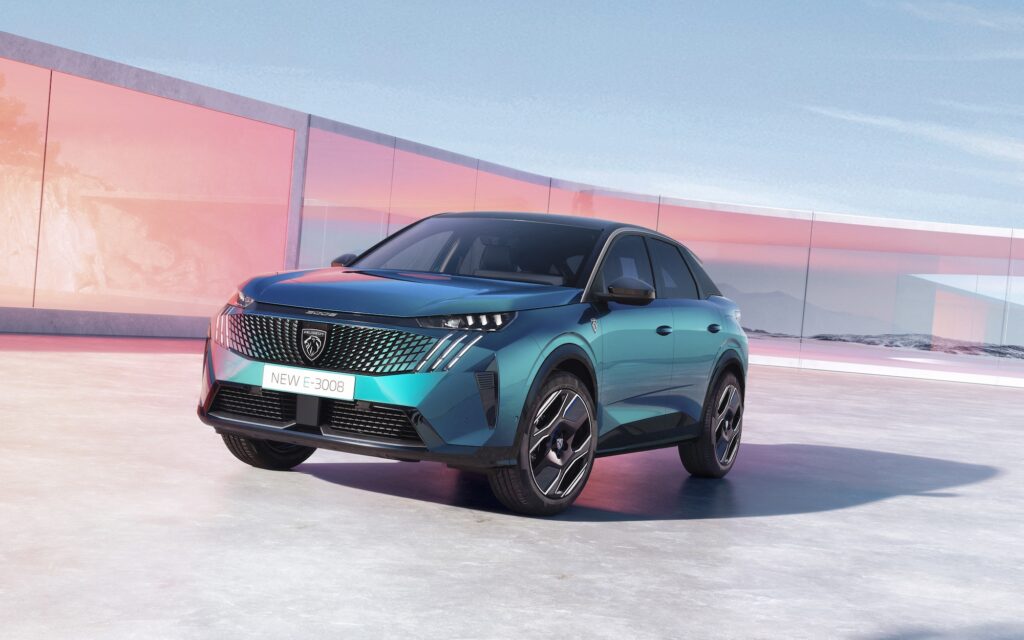EU new-car market falls with double-digit BEV decline
22 April 2024

After positivity in the first two months of the year, March saw deliveries decline in all but five EU markets. This was compounded by a poor performance from battery-electric vehicles (BEVs). Tom Hooker, Autovista24 journalist, analyses the figures.
In March, a total of 1.03 million new-car registrations were recorded in the EU. This was the first time since June 2023 that the market surpassed over one million deliveries. However, a year-on-year decline of 5.2% was still seen across the bloc.
Figures from the European Automobile Manufacturers’ Association (ACEA) show that this was underscored by negative results from the region’s big four markets. Germany suffered a 6.2% drop year on year followed by Spain (down 4.7%), Italy (down 3.7%), and France (down 1.5%).
Other markets posted double-digit declines compared with March 2023. This included Sweden (down 21%), Ireland (down 17%), the Czech Republic (down 15.5%) and Belgium (down 13.5%) slumped.
Only five countries in the EU recorded growth in March. However, these were smaller markets with four or five-digit registration totals. Portugal and Poland posted gains of 6.2% and 0.9% respectively. Meanwhile, Bulgaria (up 29.2%) and Hungary (up 12.2%) also enjoyed double-digit increases. With one more unit registered last month compared with March 2023, Slovenia also achieved growth.
Across the first three months of 2024, the EU reached 2.76 million deliveries, a rise of 4.4%. This was thanks to a strong January and February.
This positivity was replicated in the bloc’s largest markets. Italy and France both enjoyed a 5.7% increase, followed by Germany (up 4.2%) and Spain (up 3.1%). The remaining six-digit markets also achieved gains, with Poland (up 12.7%), the Netherlands (up 4.2%) and Belgium (up 2.8%) boosting the overall total.
BEVs barren March
The EU’s BEV market struggled in March, recording a drop of 11.3%. A total of 134,397 registrations was not enough to stop the month joining December 2023 as the powertrain’s only two declines since April 2020.
This caused a fall in market share, with BEVs taking 13% of EU registrations, down 0.9 percentage points (pp).
March was a mixed month for the technology. The overall decline can be largely attributed to a 28.9% fall for Germany, the usual market leader. However, France posted an increase of 10.9%, with 33,981 BEVs registered. This meant less than 2,600 units separated the two countries.
Meanwhile, a smaller slump in the Netherlands (down 1.1%) compounded the total result. Belgium, the only other five-digit market, enjoyed a 23.8% increase.
The two countries are now comfortably ahead of Italy and Spain. Even with a stronger month than Spain (4,203 units), Italy only managed 5,357 registrations, less than half of what was recorded in the Netherlands and Belgium.
In the first quarter, the powertrain posted 332,999 deliveries, a rise of 3.8%. Yet, the technology’s market share remained stable at 12%, down 0.1pp year on year.
Despite a decrease of 14.1%, Germany recorded 81,337 registrations. However, it now sits only 1,514 units ahead of France, where deliveries increased 23.1% in the quarter.
Belgium and the Netherlands also enjoyed double-digit gains of 49.6% and 19.7% respectively. Meanwhile, BEV deliveries spiked by 7.7% in Spain with 11,386 registrations. Italy on the other hand endured a fall of 18.5%.
Other five-digit markets for the technology had varied performances. Denmark enjoyed BEV growth of 27.8%, while Sweden and Austria suffered falls of 19.4% and 3.9% respectively.
PHEV stability
The EU’s plug-in hybrid (PHEV) market recorded a decline in March, down 6.5% to 73,029 registrations. This caused a marginal drop in market share to 7.1% year on year.
PHEVs in Germany suffered the same fate as their BEV counterpart, with a 4.5% drop in deliveries. This was just 278 units behind France, which took over as the market leader thanks to a 3.6% gain. Belgium saw the third-largest number of PHEV registrations in March (7,160 units), despite a 15.3% decrease.
Out of the remaining four-digit markets for the technology, only Portugal (up 17.8%), Finland (up 1.6%) and Sweden (up 0.2%) posted increases. The two markets improved based on lower volume. Elsewhere, Austria (down 22.2%), Italy (down 22.1%), Ireland (down 12.6%), Spain (down 6.6%) and the Netherlands (down 5.3%) slumped.
Yet, in the first quarter of 2024, PHEVs recorded growth of 7.5%, with 204,001 units taking to the EU’s roads. This meant its market share rose to 7.4% from 7.2% in the first quarter of last year.
Market leader Germany achieved a 19.8% growth in the year-to-date, as France experienced a 5.6% increase. Behind, Belgium enjoyed double-digit growth of 21.9%.
Meanwhile, PHEV popularity drew level in Spain, Italy, the Netherlands and Sweden, with 1,600 units separating the countries’ results. The latter achieved an increase of 10.4%, followed by Spain (up 5.5%) and the Netherlands (up 4.8%), while Italy slumped 24%.
Apart from Denmark (down 55.3%) and Austria (down 2.5%) all four-digit year-to-date markets for the powertrain posted gains. This was led by Portugal (up 29.7%), Poland (up 20.2%) and Greece (up 13.9%).
Combining BEVs and PHEVs, a total of 207,426 EVs were registered in March, falling 9.7%. Market share consequently dropped 1pp to 20.1%.
However, in the first three months of the year, plug-ins posted growth of 5.1%, thanks to 537,000 deliveries. This meant a slight increase in market share to 19.4%, up 0.1pp.
Hybrid harmony
Hybrids, including full and mild hybrids, had a strong month, recording the best growth out of all powertrains in the EU. The technology improved by 12.6% year on year, with 299,426 units taking to the roads. Hybrids accounted for 29% of registrations in March, a significant improvement from a 24.4% share from one year ago.
Germany saw marginal declines for the technology of 0.3%, yet still led the market from Italy, which grew 8.3%. France is far behind the top two countries but enjoyed a 29.6% spike in March.
The remaining five-digit markets all achieved growth last month, with the Netherlands surpassing 10,000 units thanks to a 34.6% rise. Elsewhere, Poland (up 25.3%) and Spain (up 17.9%) also recorded double-digit gains.
Belgium is a smaller market for hybrids. However, the country enjoyed a delivery increase of 29.7% in March. This replicated a trend across four-digit markets of strong growth, as 11 out of 14 countries saw double-digit increases, with only Sweden (down 30.9%), Ireland (down 11%) and Slovakia (down 1%) enduring declines.
Across the first three months of 2024, a total of 801,315 hybrids were delivered in the EU. This meant a growth of 19.7% and a surge in market share of 3.7pp to 28.9%.
Germany is still the most popular market for hybrids in the EU, helped by an 11.3% growth. However, Italy is closing in. The country posted a 12.6% increase in March and now sits less than 1,900 units away from Germany.
France, the only other six-digit country for the technology, saw a significant surge, up 33.4%. Meanwhile, Spain, a smaller market for hybrids, enjoyed an increase of 23.1%.
The remaining five-digit markets all recorded double-digit growth, with Greece (up 49.2%), Poland (up 38.2%), the Netherlands (up 34.9%) Belgium (up 28.5%) and Hungary (up 28.3%) having positive starts to the year.
Petrol’s poor performance
Petrol was the most popular powertrain in March with 365,376 registrations, but suffered a fall of 10.2% year on year. This equated to a 2pp drop in market share to 35.4%.
Decreases in France (down 17.7%), Spain (down 10.1%) and Germany (down 3.4%) hampered petrol’s performance, even with Italy’s 5.7% gain. Lower demand in the other five-digit markets of Belgium (down 23.9%) and Poland (down 19.5%) also affected the overall result.
In the first quarter of 2024, petrol deliveries were down 1% to 980,477 units. Its market share sits at 35.4%, down from 37.3% across the first three months of 2023. This is largely due to the growth of hybrid powertrains.
Out of the big four EU markets, Italy has seen the strongest growth, surging 20%. Germany also saw year-on-year growth of 4%. However, this was contrasted with declines in France and Spain of 8.2% and 5.2% respectively.
Looking at the five-digit markets, only Ireland (up 13.6%), Portugal (up 20.5%) and Sweden (up 3%) have more potential for growth.
Diesel’s delivery decline
Diesel saw a stronger decline than its internal-combustion engine (ICE) counterpart in March, falling 18.5% to 128,227 deliveries. However, this sent the market share rate as petrol, down 2pp last month to 12.4%.
Germany accounted for 37.7% of the diesel market. Deliveries decreased by 0.5% in March, but compared with the other three major markets, this was marginal.
Spain suffered a 38% slump, followed by France (down 32.1%) and Italy (down 27.6%). Elsewhere, Romania (up 34.1%), Croatia (up 4.7%) and Hungary (up 2.4%) were the only four-digit markets to achieve gains. However, these increases were all recorded on totals lower than 2,000 units.
Across the quarter of the year, diesel deliveries declined 10.6% in the EU. A tally of 355,352 registrations was not enough to stop its market share slipping to 12.8%, down from 15% in the first quarter of 2023.
Double-digit decreases in France (down 29.3%), Spain (down 24.4%) and Italy (down 17.4%) have pushed the diesel market down in the year-to-date, despite Germany’s 4.1% increase. The only countries experiencing gains in 2024 so far are either three or four-digit markets, apart from Ireland (up 8.9%).
ICE freezes over
Both ICE powertrains struggled in March, with a combined total of 493,603 deliveries down 12.5%. Across the first three months of 2024, the decline was more subdued, falling 3.7% to 1.33 million registrations.
This result meant that ICE no longer held over half of the market. The powertrain accounted for 47.8% of deliveries last month, compared to 51.8% in 2023. This was replicated in the first quarter results, down 4.1pp to 48.2%.
The ‘others’ category, including hydrogen fuel-cell electric vehicles, natural gas vehicles, liquid petroleum
m gas, E85/ethanol, and other fuels, reached 31,420 registrations in March. This was an increase of 8.1% year on year, and boosted its market share to 3%, up 0.3pp.
Across the first three months of 2024, the category saw 94,485 units take to the road, growing 13.5%. This equated to another market share gain of 0.3pp to 3.4%.



